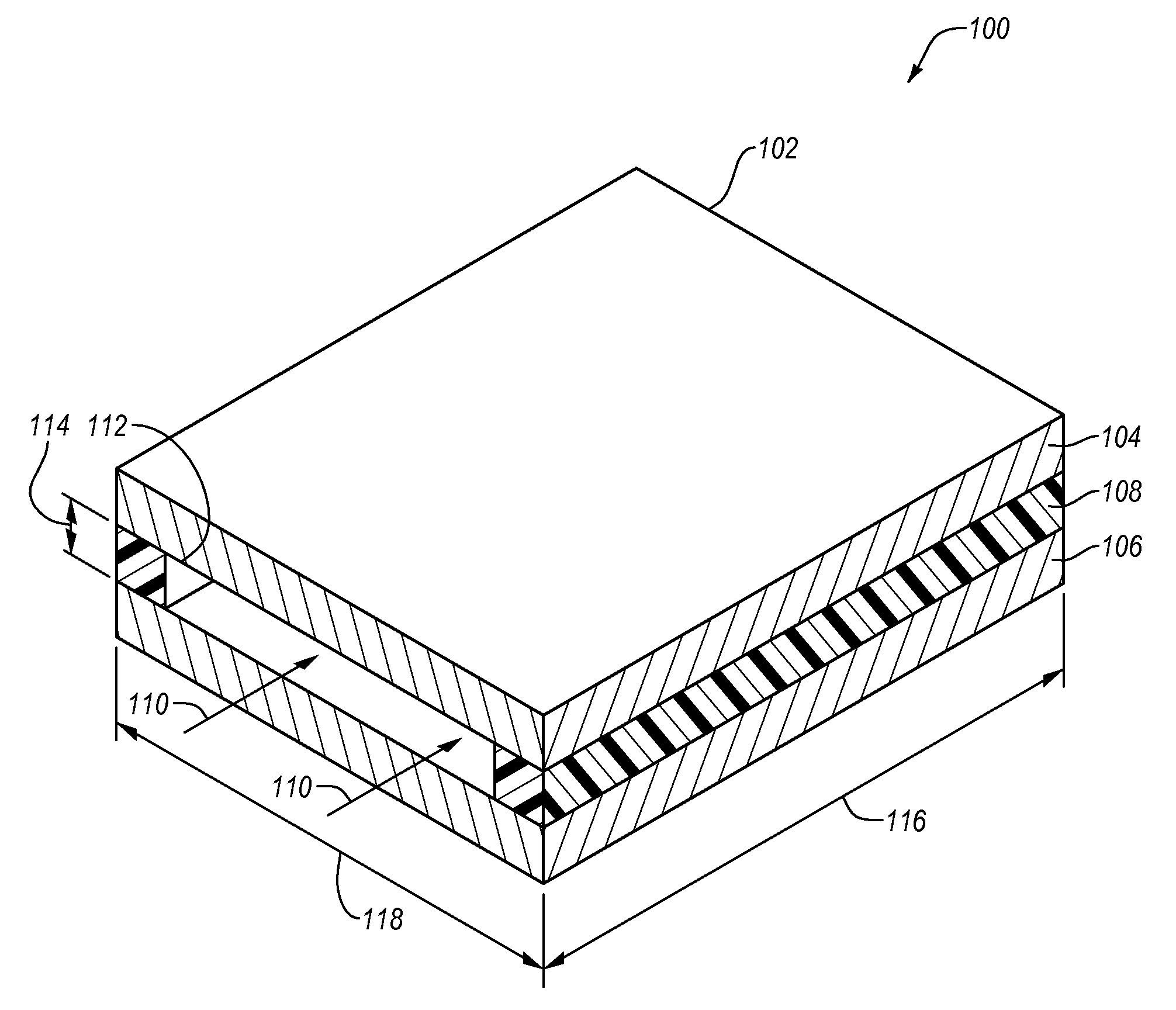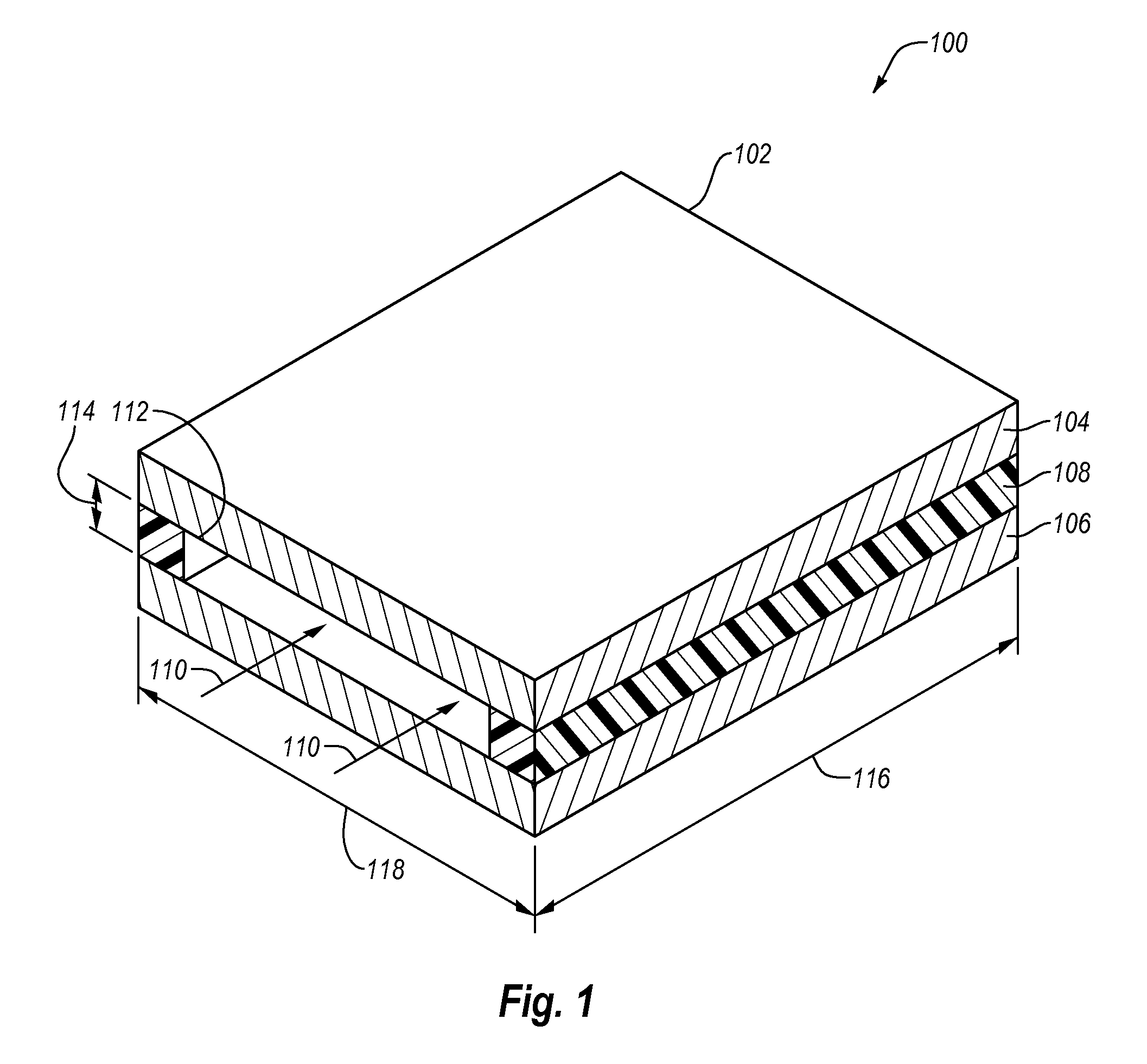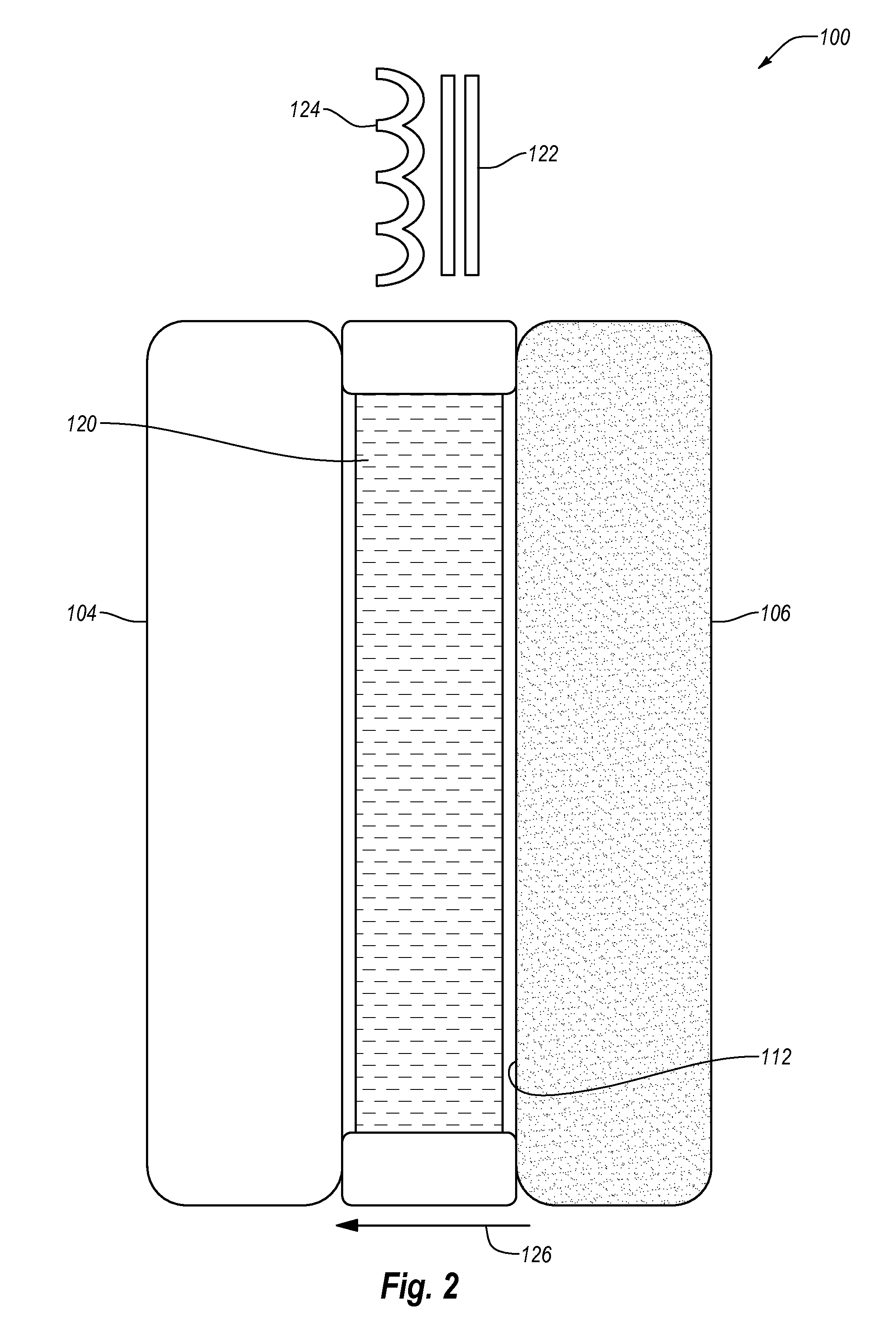Systems, apparatuses, and methods for extracting non-polar lipids from an aqueous algae slurry and lipids produced therefrom
a technology of algae slurry and extracting lipids, applied in the field of energy and microbiology, can solve the problems of low net energy gain, significant carbon footprint, and inability to meet today's alternative energy demands, and achieve the effect of high volume flow ra
- Summary
- Abstract
- Description
- Claims
- Application Information
AI Technical Summary
Benefits of technology
Problems solved by technology
Method used
Image
Examples
example 1
Cell Lysing Method and Apparatus
[0079]In view of the interest in algae as a source of fuels and other materials, the development of methods and apparatuses for processing algal cells on a large scale is of great utility in processing the algal cells for such purposes. Such methods and apparatuses are described below.
[0080]One embodiment of a method for processing algal cells in suspension involves passing algal cells in aqueous suspension through a static mixer, where the static mixer creates cavitation effects, electrolyzing the suspension, and separating lysed cells from water in the suspension.
[0081]In particular embodiments, the method also involves entraining a pH or ORP modifying agent in the suspension, e.g., carbon dioxide. In such an embodiment, carbon dioxide typically is entrained in a static mixer. In a further refinement, because alkaline materials may assist (make the process more efficient), agents may be used.
[0082]In certain embodiments, the method also involves col...
example 2
Quantification of Lipid Extraction and Identification of Optimal EMP Extraction Parameters
[0127]In the experiments described below, quantification of lipid extraction using an EMP apparatus as described herein and identification of optimal extraction parameters are described. The results described below correspond to the data in FIG. 16.
example 3
Use of Cavitation and EMP to Harvest Carbohydrates and Proteins
[0189]FIG. 14 shows results from a test procedure for harvesting carbohydrates and proteins from algae. The test procedure was performed as follows. The algae slurry was first processed through the EMP unit at room temperature. The EMP processed slurry was collected in a storage tank. It was then cavitated through the MX unit. The cavitated slurry was then allowed to sit for a few minutes. A thick mass of algae cellular mass and debris raised to the top and remained floated. The floating cellular mass and debris was collected off the top for analysis.
[0190]The algae samples collected through the Inverse SSE process was analyzed by Anresco Laboratories, San Francisco. The samples were analyzed for lipid, protein and carbohydrate content of the algae. The analysis by Anresco Laboratories gave the total mass of protein, lipid or carbohydrate in a given sample (say ‘x’ mg).
[0191]The dry mass concentration of the algae batch ...
PUM
| Property | Measurement | Unit |
|---|---|---|
| Length | aaaaa | aaaaa |
| Length | aaaaa | aaaaa |
| Fraction | aaaaa | aaaaa |
Abstract
Description
Claims
Application Information
 Login to View More
Login to View More - R&D
- Intellectual Property
- Life Sciences
- Materials
- Tech Scout
- Unparalleled Data Quality
- Higher Quality Content
- 60% Fewer Hallucinations
Browse by: Latest US Patents, China's latest patents, Technical Efficacy Thesaurus, Application Domain, Technology Topic, Popular Technical Reports.
© 2025 PatSnap. All rights reserved.Legal|Privacy policy|Modern Slavery Act Transparency Statement|Sitemap|About US| Contact US: help@patsnap.com



